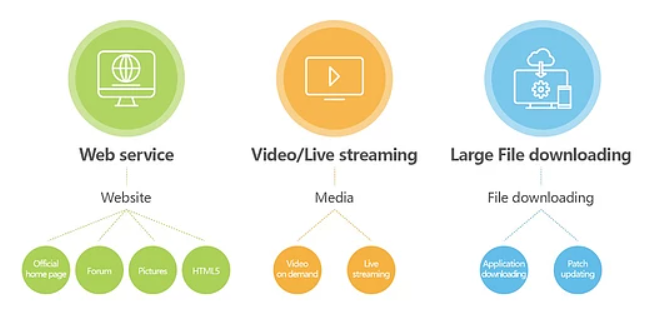Is Multi-Cloud right for your business?

As discussed in previous articles: Top 3 Cloud Providers, the cloud and the multi-cloud would be beneficial to many businesses and there are more and more enterprises including this feature to their IT structure. Organizations are using multiple and often-connected cloud services to increase scalability, reduce costs or become more agile by optimizing the business infrastructure.
However, even if multi-cloud future prospects look promising not all business rushing head first into the cloud. A 2019 research report demonstrated 98% of businesses currently still run-on-premises servers so any investment in multi-cloud must be linked in some way with the businesses own on-premises services, storage and networking equipment.

Basing your business on a multi-cloud IT structure can grant greater flexibility for the business allowing the possibility for adaptability, and possibly constraining, your workload/application to fit the tools available at your business in a single-deployment model.
Moreover, as prices fluctuate and eventually decrease for commoditization infrastructure (such as IaaS) will mean that it might be more attractive to opt for such a service such as storage or back-up. Meanwhile, Mark Cree, chief executive of cloud storage solutions start-up InfiniteIO, notes: “Data migration and tiring techniques have long existed, storing infrequently accessed files on private or public cloud storage, which is relatively less expensive compared to primary storage. Enterprise IT teams should support existing workloads moving to the cloud by making all the associated files available to people and applications regardless of location.”
All of this and avoiding vendor lock-in (explore more on vendor lock-in and other advantages on our last week’s article). This basically alludes to the idea that the business will not be ‘tied’ to one technology vendor when opting for cloud computing services. “The idea is that not ‘keeping all of your eggs in one basket’ will result in less risk,” explains Chris Astley, director of cloud transformation at KPMG UK.
Some enterprises have used multi-cloud to developing their own IP and data analytics. This happens when the enterprise realises that in the correct verticals their value lies in their ability to won their intellectual property (IP).
‘An IoT platform is a multi-layer technology that enables straightforward provisioning, management and automation of connected devices within the Internet of Things universe’ – KaaIoT. An IoT Platform connects the hardware divide to the cloud using flexible connectivity options in a combination with security mechanisms and data processing capabilities. The challenge with multi-cloud is that many cloud provider do not offer their IoT services on other cloud platforms, thus it becomes difficult to gain a multi-cloud infrastructure. Companies may need to use a particular cloud provider to access their preferred IoT platform: Amazon Web Services (AWS), Google Cloud Platform (GCP), IBM Cloud, and Microsoft Azure are a few examples offering flexibility in deployment methods.
However, disregarding the challenges in multi-cloud deployment for IoT, the benefits of multi-cloud for IoT are great: you can gain proximity to devices; different geographical regions will require different cloud providers depending on location allowing greater connectivity; possibility of integration with existing systems.

Many Cloud suppliers allow a free trial for the business to try the product/service before long-term commitment, as Dave Adamson chief information officer at cloud managed services provider EACS says ‘this flexibility allows enterprises to select a provider on a per-application basis, as needed, though they must be mindful not to allow the sprawl of cloud providers to become unmanageable’. Another interesting product is the mCloud which has a completely free trial which can include many cloud providers.
We have explored the key benefits of moving to the cloud and how different industries can use this architecture for their own benefit. The multi-cloud infrastructure can act as an enabler, not the driver, of innovation. If you have any questions or queries feel free to drop us an email!
Stay tuned for next week, where we explore the complexities of multicloud and whether it should be your best choice.



